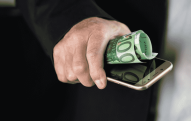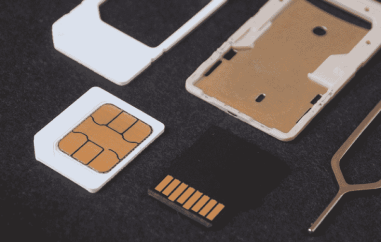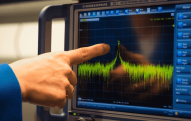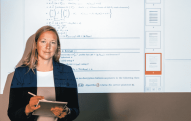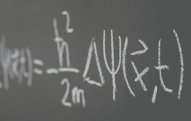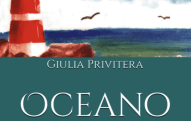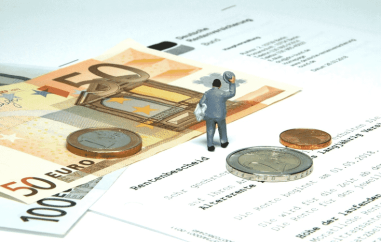A 300-year old mystery solved!
Professor Andrew Wiles (pictured above), faculty at the Mathematical Institute, University of Oxford has won the most prestigious award in Mathematics- Abel prize, in recognition for his solution to a 300-year old mathematical problem- famously known as Fermat's Last Theorem!
This particular problem, in a branch of mathematics called Number Theory, has baffled many mathematicians over the past three centuries.
So who is Fermat and what exactly is this problem with an elusive solution?
Scribbled in a corner
Pierre de Fermat was a seventeenth century French mathematician. Fermat made many pioneering contributions in the field of physics and mathematics such as in optics, number theory, and analytical geometry amongst others.
In 1637, Fermat wrote in the corner of his notebook that there could be no three positive integers (numbers that can be written without fractional components) that satisfy the following equation:
X^n + Y^n =Z^n, when n is greater than 2.
This is popularly known as Fermat's Last Theorem.
"The nice thing of Fermat's Last Theorem is that the statement is so easy, you can understand it. That does not happen often. Most of the time, you can't put a math problem into such simple terms that you can actually explain it to a non-expert," says a number theory expert, Dr. Susanne Pumpluen, Associate professor in the School of Mathematical Sciences, The University of Nottingham and also a member of the Women in Mathematics Committee, London Mathematical Society.
But like every other scientific conjecture, one needs an experiment to test it to prove or disprove it. In order to validate a theory or conjecture mathematicians derive a formal solution known as the 'proof'.
You may naturally wonder- so what is so unique about this theorem? Isn't there a proof written by Fermat himself for this so called simple looking problem, waiting for us to be discovered among the archaic records and textbooks in Europe?
Unfortunately, there isn't any. And here's the reason why. Tucked in the very same corner, Fermat writes, "I have discovered a truly marvellous proof of this, which this margin is too narrow to contain."Â
And now to the proof
Fast forward to the 1990s, nearly three centuries and several attempts (by other mathematicians) later - a British professor Sir Andrew Wiles, solved this enigmatic problem! Dr. Wiles first came across this problem when he was just 10 years old and had been fascinated by it ever since.
"When Wiles announced his proof of Fermat's Last Theorem, it was a huge surprise! Many number theorists had not believed that a solution was in reach," says a fellow number theorist Dr. Ursula Whitcher, an associate professor of Mathematics at the University of Wisconsin--Eau Claire, United States. Whitcher's research involves relationships between geometry, number theory, and physics.
Mathematics as a field is unique compared to other disciplines in the natural and physical sciences. Most of the concepts in math have been around for thousands of years- be it Euclidean Geometry or Pythagoras theorem, for instance that gives the relations of the sides of a right angled triangle. Therefore, any new mathematical result or 'proof' is at first met with skepticism and perhaps awe, possibly at the same time.
"Wiles's proof of Fermat's Last Theorem made headlines around the world. I was just starting high school then: this was one of the first times I'd ever heard of a *new* proof of a mathematical result (as opposed to the proofs you work out in geometry class, that people have known about since Euclid)," comments Whitcher.
And last week, the Norwegian Academy of Science and Letters awarded Dr. Wiles the Abel Prize- a Nobel equivalent prize in mathematics, for his 'stunning proof to Fermat's Last theorem... and for opening a new era in number theory.'
The Abel committee has hailed Dr. Wiles' proof as one of the most headline-grabbing news worldwide!
But why all this euphoria over a proof?
The pudding in the proof
For all the seminal math contributions that have driven many inventions and breakthroughs in science and technology, mathematicians have not had the smoothest of rides. Most often than not, researchers in pure mathematics face a lot of resistance and are met with a lukewarm response from their own-math peers, leave alone non-mathematicians.
Now, why is that the case?
"Doing research in pure mathematics is not always straightforward. And worst of all perhaps, it does not always lead to immediate applications in the real world. That is kind of scary to say aloud, because it is harder to sell to people. I mean, who cares about some formulae...??" remarks Pumpluen.
If you do feel that the sheer joy of solving a 'pure math' can only be experienced by a chosen esoteric bunch of math zealots, do not despair- for here are some very interesting real-world applications.
Whitcher says, "..there are applications much closer to Wiles' specific proof that matter a lot. Along the way to proving Fermat's Last Theorem, Wiles learned a great deal about families of mathematical objects called elliptic curves."
Explaining elliptic curves, Whitcher adds, "Imagine them as doughnut shapes, that bend and deform as time passes," putting it in perspective. She says that one can also perform some arithmetic on these curves: "It turns out that if you add a point on an elliptic curve to itself a bunch of times, it's really hard to figure out where you started. This observation is the starting point for a type of encryption called 'elliptic curve cryptography', that's used every day to encode personal information."Â
"For instance, if you are in the EU and have an Austrian or German ID cards, they both use elliptic curve cryptography to protect personal information. It's like having a little bit of Andrew Wiles' work in your pocket!" remarks Whitcher excitedly.
Pumpluen works on another fascinating real-world application, which directly relates to coding theory, used in wireless digital data transmission.
Many ideas in abstract mathematics such as the one discovered by Dr. Wiles have been largely developed owing to a demand in different fields such as cryptography or say online banking, where there is a need to safely send data.
However, research in mathematics doesn't often lead to instant gratification. And in most cases, it takes centuries before a related application is found.
Nevertheless, an optimistic Pumpluen says, "So we do not know if there will eventually be any improvements to our quality of life yet, just because of Fermat's Last Theorem was solved. But we might have been witnesses to something big, which in 500 years will somehow shape the landscapes of the lives of those who come after us. And we do know that past discoveries in pure math do shape the way we think and live today, which made no sense to the people living at the time of their discovery. So there is hope!"
The Abel Prize
So what is the next big problem in mathematics?
There are many open questions and, in particular, seven mathematical problems that are as yet unsolved. These were chosen by a committee of mathematicians, proposed by The Clay Mathematics Institute based in the United States in 2000. Interestingly, several of them involve number theory. And here's the tantalizing bit- You will not be sweating it out for nothing since who ever cracks them will be awarded with a cash prize of one million dollars per solution!
But, what about solving Fermat's Last Theorem? The namesake of the Abel prize was Neils Hendrik Abel - a prolific Norwegian mathematician from the 19th century. Regrettably, most of his seminal contributions were not recognized during his lifetime and Abel died in poverty at a very young age of 26. Therefore, it is only befitting that the Abel prize awarded to Dr. Wiles includes a windfall of 600,000 Euros!
So, here's a take home for students in the classroom - It pays well to 'love' mathematics. Who knows, one day it could make you a millionaire!
Image credit: John Cairns


